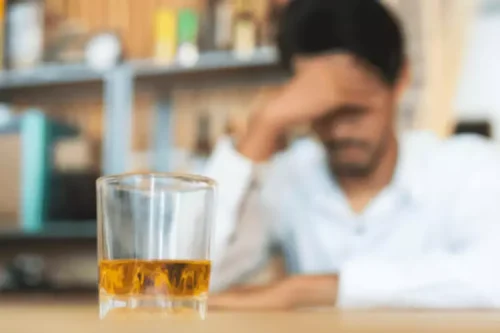
We quantified current alcohol use with the Alcohol Use Questionnaire [AUQ; 60] from which we calculated a “binge drinking score” [60]. This score was log transformed to provide a Gaussian distribution suitable for parametric statistics. The Carolina Alcohol Use Patterns Questionnaire (CAUPQ [61]) was used to estimate a total number of adolescent (0–21 years) binge episodes (see Supplementary Materials) and quarter-root transformed before statistical analysis.

What are the short and long-term effects of alcohol use on your brain and body?
Early case studies highlighted striking morphological anomalies, most notably thinning of the corpus callosum and enlargement of ventricles, but subsequent radiological investigations have highlighted there is considerable variability in the impact of FASD on brain development [58]. Quantitative analyses of brain macrostructure in FASD have repeatedly found lower grey and white matter volume along with increased thickness and density of cortical grey matter [59]. Crucially, findings have found no morphological differences in the occipital lobe, suggesting that not all brain structures are affected equally.

Inclusion criteria for all participating iRBD patients
In addition, using a combination of activity dependent genetic tools and chemogenetic manipulations, a small ensemble of mPFC neurons was shown to serve as a memory to cue induced relapse to alcohol use [99]. Interestingly, like the molecular mechanisms that gate the development of AUD [3], STOP mechanisms also occur on the level of circuitries [100]. Specifically, a subset of infralimbic cortical neurons serve to protect against relapse to alcohol use [100]. Recent advances in neurotechnologies have opened new avenues of investigation into how alcohol-induced alterations in neural circuit activity influence ongoing behaviors and decision-making (Figure 2) [4,68]. Here we will review these advances, focusing on circuit- and receptor-level studies (for review of brain-wide neuronal networks see [69]).

Hyperactive Dopamine Response Linked to Alcoholism
Unfortunately, some diseases can disturb the brain’s delicate balance of dopamine. Parkinson’s disease and certain metabolic disorders, for instance, can deplete dopamine. As a mom who has lost a child and is fighting to protect other children, it is difficult to hear some parents say that their children know better. And a young brain isn’t developed enough yet to not be impulsive, to not fall to peer pressure, or to foresee the potential dangers that adults can predict.
- This novel mechanism could have far reaching implications for other drugs of abuse, including alcohol, which are known to increase dopamine levels in the mesolimbic system [72].
- DHβE was applied to slices to isolate dopamine axons from the influence of nAChRs.
- With regards to the VTA, both in vitro and in vivo studies show that alcohol increases the firing of dopamine neurons in the VTA projecting to NAc [75–79, 40].
- New animal models of binge alcohol intake, such as the alcohol deprivation effect (ADE) and the “Drinking-in-the-Dark” technique, would help us to develop new treatment methods against alcohol dependence.
Strikingly, mice that display inhibitory activity in this circuit during the first alcohol exposure are more likely to develop compulsive drinking behavior. Evidence suggests that alcohol affects brain function by interacting with multiple neurotransmitter systems, thereby disrupting alcohol and dopamine the delicate balance between inhibitory and excitatory neurotransmitters. Short-term alcohol exposure tilts this balance in favor of inhibitory influences. After long-term alcohol exposure, however, the brain attempts to compensate by tilting the balance back toward equilibrium.
Dopamine depletion procedure
Ultimately, Lembke says, this is a universal problem – not one limited to those of us struggling with the disease of addiction – that has come with living in modern life. And to restore our sanity, collectively we must rethink how to navigate a dopamine overloaded https://ecosoberhouse.com/ world. It is classified as a catecholamine (a class of molecules that serve as neurotransmitters and hormones). It is a monoamine (a compound containing nitrogen formed from ammonia by replacement of one or more of the hydrogen atoms by hydrocarbon radicals).

While age didn’t seem to affect this, lead researcher, Harry Smith, explains some people have a single mutation in one of the genes involved in caffeine metabolism, which could influence how long caffeine stays in your system. “Just for the record, drinking excessively, exceeding guidelines and binge drinking are not good at any age! In some cases, drugs such as heroin and marijuana can even act as neurotransmitters because they mimic the chemical structure of one. When those drugs are in the body and are seen as neurotransmitters, they can activate neurons.
- It should, however, be noted that recent clinical trials in alcohol‐dependent individuals were unable to find a beneficial effect of varenicline based on self‐reported alcohol consumption [212, 213].
- To date, there are three medications approved by both the European Medicines Agency (EMA) and the Food and Drug Administration (FDA) for the treatment of alcohol dependence; disulfiram, naltrexone and acamprosate.
- These neurological changes occur as the development of tolerance to alcohol’s effects.
- Instead it has been suggested that OSU6162 produces functionally opposite effects by acting as an antagonist at both presynaptic autoreceptors and postsynaptic D2 receptors [189, 193–195].
- This is because it’s not easy to see what type of chemical is within the sacs that are released from neurons.
- Researchers at McGill University in Canada performed positron emission tomography (PET) brain scans on 26 social drinkers and noted a “distinctive brain response” in the higher-risk subjects after they consumed three alcoholic drinks.
- Typical brain maturation can be characterized as a loss in grey matter density due to synaptic pruning alongside ongoing growth of white matter volume that reflects increased myelination to strengthen surviving connections [49].
- There have been some studies conducted into the involvement of this pathway in the process of alcohol addiction.
- Want more inspiration, knowledge and ideas about alcohol and how to make the changes you want stick?
When alcohol consumption is abruptly reduced or discontinued, a withdrawal syndrome may follow, characterized by seizures, tremor, hallucinations, insomnia, agitation, and confusion (Metten and Crabbe 1995). Scientists postulate that this syndrome represents the hyperactivity of neural adaptive mechanisms no longer balanced by the inhibitory effects of alcohol (see figure). Alcohol might induce sedative effects by reducing excitatory neurotransmission. The major excitatory neurotransmitters in the brain are the amino acids aspartate and glutamate, which act through both NMDA receptors—so named because they respond to the synthetic chemical N-methyl-d-aspartate—and non-NMDA receptors. Short-term exposure to intoxicating concentrations of alcohol appears to inhibit both NMDA and non-NMDA receptor activity, potentially resulting in sedation (Valenzuela and Harris 1997). As in the case of GABAA receptors, however, these excitatory receptors are relatively insensitive to intoxicating concentrations of alcohol under some experimental conditions (Wright et al. 1996), underscoring the need for more research in this area.


发表回复